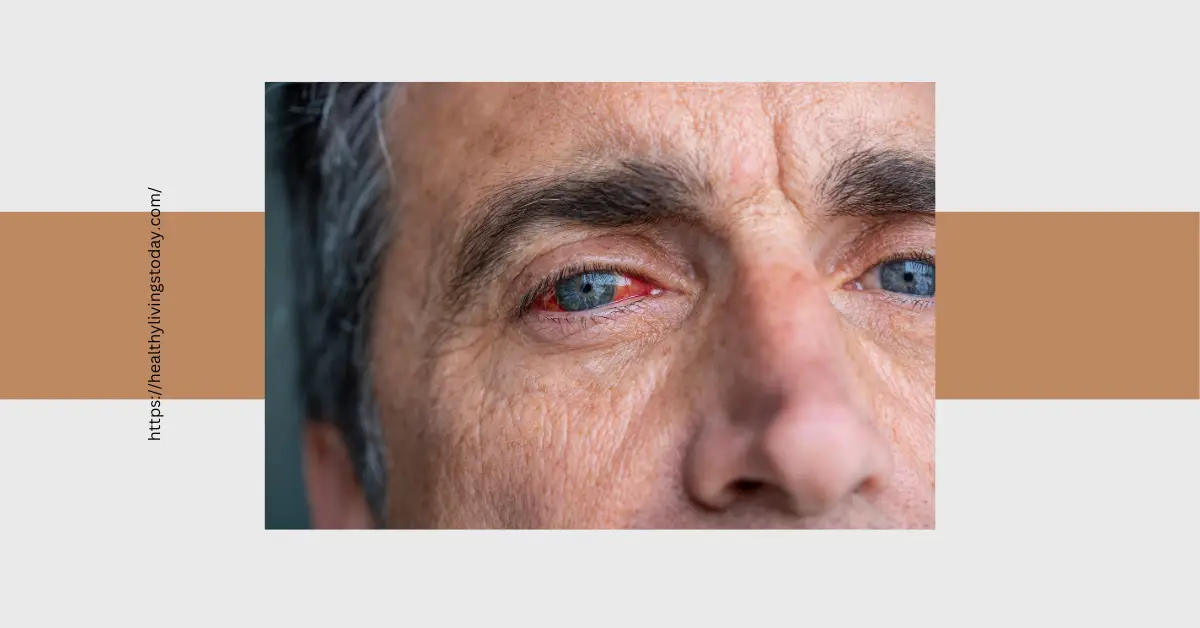Ocular tuberculosis presents with various symptoms and requires proper treatment to address its causes. We will explore the symptoms, causes, and treatment of ocular tuberculosis.
Ocular tuberculosis refers to tuberculosis that affects the eyes and can lead to vision loss if left untreated. It may manifest as eye pain, redness, blurry vision, sensitivity to light, and even the appearance of floaters or specks in the field of vision.
This condition occurs when the Mycobacterium tuberculosis bacteria spread from other parts of the body, such as the lungs, to the eyes. Prompt diagnosis and appropriate treatment with anti-tuberculosis medications are essential to prevent further complications and preserve vision.
Symptoms Of Ocular Tuberculosis
Ocular tuberculosis refers to the infection of the eye caused by the mycobacterium tuberculosis bacteria. The symptoms can vary from person to person, but there are some common signs to look out for. One of the most noticeable symptoms is vision impairment and blurry vision. This can be a result of the bacteria affecting the tissues in the eye, leading to a decrease in visual acuity. Eye pain and redness are also commonly experienced by individuals with this. The infection can cause inflammation and irritation in the eye, leading to discomfort and redness. Another symptom to be aware of is sensitivity to light. Ocular can make the eyes more sensitive to bright lights, causing discomfort when exposed to light sources. Early detection and treatment are crucial in managing ocular and avoiding any further complications.
Causes Of Ocular Tuberculosis
Ocular tuberculosis is caused by infection with Mycobacterium tuberculosis, the bacteria responsible for tuberculosis. It can occur when the bacteria spread from active pulmonary tuberculosis to the eye. This is the most common cause of ocular tuberculosis.
In addition, a weakened immune system can increase the risk of tuberculosis. People with conditions such as HIV/AIDS or those taking immunosuppressive drugs are more susceptible to developing tuberculosis.
Early diagnosis and prompt treatment are crucial to prevent complications and preserve vision. If you experience any symptoms of tuberculosis, such as eye pain, redness, blurred vision, or sensitivity to light, it is important to seek medical attention for proper evaluation and management.
Diagnosis Of Ocular Tuberculosis
The diagnosis of tuberculosis involves various tests and examinations. Ophthalmic examination and visual acuity testing are important for assessing the condition of the eyes. Additionally, the tuberculin skin test and chest X-ray are commonly used diagnostic tools. The tuberculin skin test measures an individual’s immune response to the tuberculosis bacteria,
while the chest X-ray helps to identify any signs of tuberculosis infection in the lungs. Another diagnostic method is polymerase chain reaction (PCR) testing, which detects the presence of Mycobacterium tuberculosis DNA in ocular tissue samples. It is a highly sensitive technique and can provide rapid results. These diagnostic approaches play a crucial role in confirming the presence of tuberculosis and guiding appropriate treatment plans.
Treatment Options For Ocular Tuberculosis
Ocular tuberculosis is a serious condition that requires prompt and accurate treatment. Antibiotic therapy is the primary treatment option for ocular tuberculosis. This involves the use of combination drug regimens to target the Mycobacterium tuberculosis bacteria that cause the infection. Antibiotics such as Rifampin, Isoniazid, Ethambutol, and Pyrazinamide are commonly prescribed to effectively treat ocular tuberculosis.
Corticosteroid eye drops are often used in conjunction with antibiotic therapy to reduce inflammation and alleviate symptoms such as pain, redness, and swelling. These eye drops help to improve vision and prevent complications that may arise from ocular tuberculosis.
In certain cases, surgical intervention may be necessary. Surgical procedures, such as vitrectomy or drainage of abscesses, may be performed to remove infected tissue and improve the chances of a successful recovery.

Antibiotic Therapy For Ocular Tuberculosis
The main treatment for tuberculosis is antibiotic therapy, which typically involves a combination of different medications. Two commonly used drugs are isoniazid and rifampicin. Isoniazid helps to kill the bacteria that cause tuberculosis, while rifampicin helps to prevent the bacteria from growing and spreading further in the body. Another combination of drugs that may be used is ethambutol and pyrazinamide.
Ethambutol works by inhibiting the growth of the bacteria, and pyrazinamide helps to destroy the bacteria’s ability to reproduce. It is important to note that antibiotic therapy for ocular tuberculosis is often administered through directly observed therapy (DOT), where a healthcare provider directly observes the patient taking their medication to ensure adherence and effectiveness of the treatment.
Surgical Intervention For Ocular Tuberculosis
Vitrectomy is a surgical intervention method used in the treatment of ocular tuberculosis. It involves the removal of the vitreous gel from the eye to eliminate any infected tissues. This procedure allows for a more thorough examination of the eye and enables the delivery of medications directly to the affected areas.
Tube shunt surgery is another option for patients with ocular tuberculosis. It involves the placement of a small tube in the eye to allow excess fluid to drain out, reducing intraocular pressure and preventing further damage.
Laser photocoagulation, on the other hand, uses a focused beam of light to create scar tissue that seals off leaking blood vessels in the eye. This procedure can be beneficial in managing ocular tuberculosis-related complications such as retinal detachment.
Precautions And Prevention Of Ocular Tuberculosis
In order to prevent and minimize the risk of ocular tuberculosis, it is important to follow certain precautions and maintain proper hygiene. These measures can help reduce the transmission and spread of the disease.:
- Regular handwashing with soap and water, especially after coughing or sneezing, can prevent the spread of tuberculosis bacteria.
- Avoid close contact with individuals who have active pulmonary tuberculosis, as they may transmit the infection through respiratory droplets.
- Properly covering the mouth and nose while coughing or sneezing can prevent the release of infectious droplets into the air.
- Prompt treatment of active pulmonary tuberculosis is crucial to prevent its progression and the potential involvement of the eyes.
- Individuals at higher risk should consider getting tuberculosis vaccination, as it can help prevent the development of ocular tuberculosis.
By taking these precautions and following the recommended guidelines, individuals can minimize the risk of ocular tuberculosis and contribute to the overall prevention of tuberculosis transmission.

Credit: www.news-medical.net
Frequently Asked Questions For Ocular Tuberculosis Symptoms: Treatment, Causes Explained Here
What Is The Cause Of Ocular Tuberculosis?
Ocular tuberculosis is caused by the bacteria Mycobacterium tuberculosis, which infects the eye.
What Are The Symptoms Of Ocular Tuberculosis?
The symptoms of ocular tuberculosis include redness, pain, blurry vision, sensitivity to light, and eye discharge.
What Are The Symptoms And Treatment Of TB?
Symptoms of TB include coughing, fatigue, weight loss, and chest pain. Treatment involves taking antibiotics for at least 6 months to kill the bacteria. It is important to complete the full course of medication to prevent it from becoming drug-resistant.
Conclusion
Understanding the symptoms, causes, and treatment options for ocular tuberculosis is crucial for early detection and management. By recognizing the subtle signs and seeking prompt medical attention, individuals can prevent further complications and improve their overall eye health. Keeping in mind the importance of thorough diagnosis and appropriate therapy, it is essential for individuals to consult with a healthcare professional for personalized guidance and care.
Stay proactive and prioritize your ocular health!
